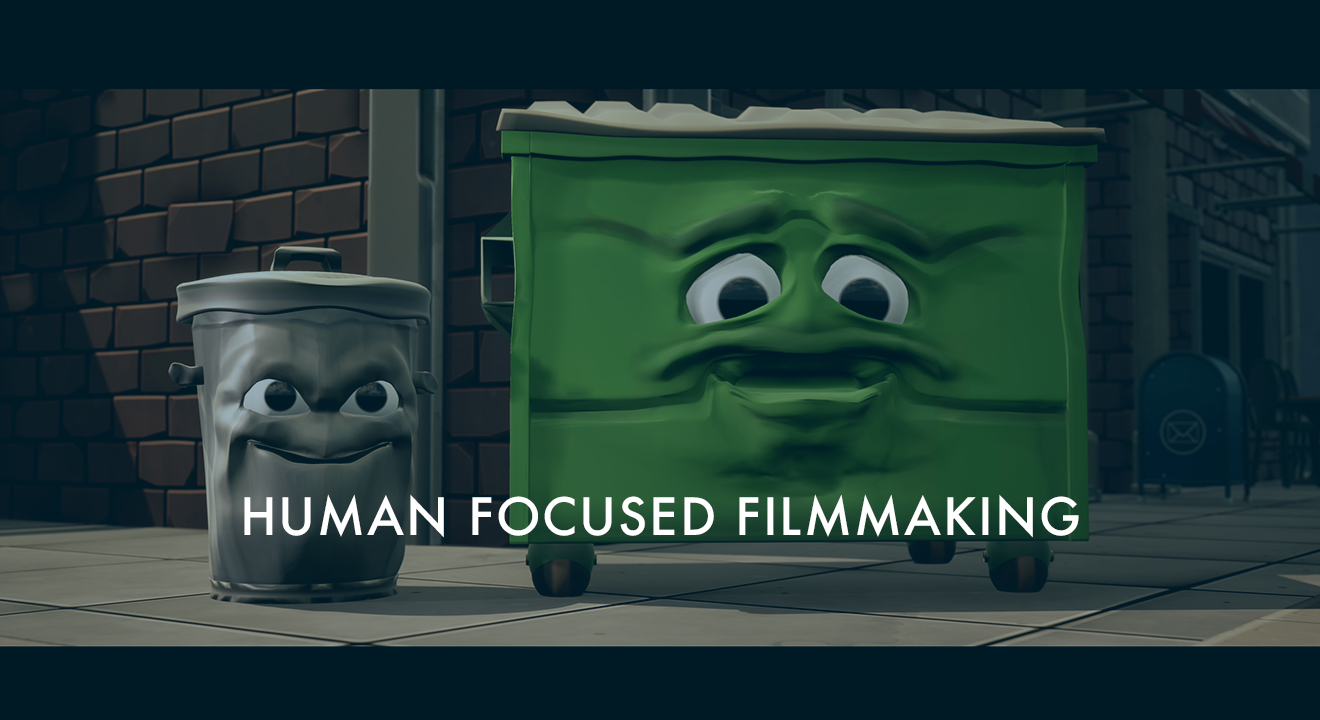Human focused filmmaking has always been the core of our creative approach at Indie Film Factory. From our earliest productions to our latest feature, it’s the one thing that continues to resonate with audiences—no matter the budget, format, or platform. This past week, we hit a major milestone: the completion of our first fully animated feature film. We used open-source software like Blender and Unreal Engine to craft a world unlike anything we’ve done before. And yet, the real magic didn’t come from the tech—it came from the emotional heartbeat of the story.
Our movie features a cast of unlikely heroes: talking trash cans who embark on a quest to save humanity from its own moral negligence. While the characters may be made of metal and plastic, the message they carry is deeply human. This wasn’t a film made for kids—it was a film made for anyone who’s ever felt unseen, unheard, or underestimated. That’s the power of human focused filmmaking: it transcends genre, medium, and even species.
Finding Deeper Meaning Behind the Scenes
Let’s be honest: Hollywood has become obsessed with spectacle. There’s always another sequel, reboot, or franchise “event” around the corner. And while these films often dazzle us visually, many seem to lack emotional weight. What I’ve learned over the years is that stories only stick when there’s something real underneath the surface—something audiences can feel.
You don’t have to look far for great examples. Pixar’s Soul dug deep into existential questions of purpose and identity. Last year’s Academy Award-winning animated short Flow featured animals, but its emotional core was undeniably human. Even Superman: Legacy, despite all the controversy surrounding its release, made bold, human-centric storytelling choices that reflected the uncertainty and moral complexity of our time.
What these projects have in common isn’t just good writing—it’s a commitment to storytelling that places the human experience front and center. Even when the characters aren’t human, the human focused filmmaking approach gives their actions and emotions meaning.
Why Character Connection Still Wins
As a filmmaker, my job is to entertain first. But I also see an opportunity—maybe even a responsibility—to reflect the world we live in through the stories I tell. That doesn’t mean getting political, and it doesn’t mean making every story heavy or dramatic. What it does mean is giving characters room to feel, struggle, and grow.
Too often, we see characters leap from explosion to explosion without consequence. But audiences don’t just want flash—they want connection. That’s why so many of us grew up loving Star Wars or Indiana Jones. These were outlandish adventures, yes—but at their core were flawed, relatable people. We felt like we could be Luke Skywalker, learning the ways of the Force. We wanted to be Indiana Jones, fighting for something bigger than ourselves.
It’s not about realism—it’s about grounding characters with human traits that we recognize in ourselves.
Adding Heart to Branded Content Through Human Focused Filmmaking
At Indie Film Factory, our business spans two very different worlds: entertainment content for platforms like Amazon, Tubi, and YouTube—and branded content for companies around the globe. You might think that those client-driven projects have no room for artistic storytelling. But here’s the secret: they’re often the best place for it.
That’s where a human focused storytelling mindset makes the biggest impact. Nobody likes being sold to. Traditional ads can feel dry, repetitive, or just plain forgettable. But when we use the lens of emotional storytelling—even for a 30-second spot—the results are often surprising.
Let’s say we’re producing a video for a healthcare company. Instead of focusing solely on the technical features of their new platform, we tell the story of a patient. A real person. Someone facing a struggle that viewers can empathize with. That emotion becomes the bridge to the product. That’s when it clicks.
It doesn’t have to be overly dramatic either. Humor, warmth, nostalgia—these are all tools we use to connect. At the end of the day, we’re not making ads. We’re telling stories that happen to be branded.
Elements That Make a Story Human Driven
If you’re trying to implement this approach into your own work—whether it’s for a film, a brand, or even a personal project—here are a few guiding principles:
1. Start with emotion, not features
Before you get into what happens, ask why it matters. What does your character want? What’s at stake emotionally?
2. Highlight the real problem
For branded content, it’s tempting to lead with features. Instead, ask: what problem does this product solve for a person? Start there.
3. Let the audience feel it
Audiences are smart. Let them discover the meaning through action, reaction, and subtext—not narration or sales copy.
4. Aim for truth over trend
AI-generated scripts and algorithm-chasing shorts might get clicks, but stories rooted in truth will always endure. People can tell the difference.
Why This Human Focus Philosophy Still Works in Filmmaking
Yes, technology is evolving. We’re using real-time render engines, motion capture, and open-source animation pipelines. But those tools are just that—tools. The heart of what we do still relies on story, character, and emotion.
At Indie Film Factory, that philosophy drives everything we do—from award-winning shorts to full-length features and even our client-facing commercial work. If you’re curious about how we help brands tap into the power of narrative, check out one of my favorite projects we produced.
Focus on Emotion First, Always
Before you stress about gear or marketing plans or funding strategies, ask yourself: does this story matter? And why will it matter to someone else?
That’s the heart of human focused filmmaking. Whether you’re crafting an epic for the big screen or a micro-moment on social media, it’s the human thread that makes the difference. Not every project needs to be deep or dramatic, but every project should mean something to someone.
So forget the flash for a moment. Make story your North Star. Tell it honestly, and tell it with purpose.
Thanks for reading, and if you’re looking to collaborate on a human-first storytelling project—big or small—drop us a line here. We’d love to hear what you’re working on.
Until next time—keep it real. Keep it human.
Peace Out!
-Kelly




